“Most people in their 40s don’t understand how important Social Security will be by the time they’re 80,” Whitman says. “Eighty-one percent think they’ll use a retirement plan, but they overestimate paying for retirement themselves. Social Security, Medicare and Medicaid are so critical to our health and our financial security as we age.”
Part 3: The Pursuit of Happiness
Meet the happy realists
It shouldn’t come as a surprise that older adults in the survey make up the happiest age group. The U-curve model that depicts happiness has been widely reported: It starts high, when we’re young, hits a low in our late 40s and then begins a steady climb back up. Interestingly, though, when people 85-plus were asked to say what they considered the best decade of their lives, they most frequently cited their 50s.
But the study also shows that optimism is lowest for those in their 60s and 80s. One way to look at that is lack of optimism equates to fulfillment. “I don’t look forward to anything new,” says nonagenarian study participant Ruth. “I love to watch the birds. I love to swim. I love to play Ping-Pong. It’s just more of what I already love.”
Respondents in their 40s and 50s reported lower happiness scores but higher optimism scores.
The power of simple goals
About 2 out of 3 of the oldest adults, age 80 and older, say they’re living their “best possible life” or close to it, compared with just 1 in 5 younger adults. What’s driving this remarkable shift? “Psychologically, people notice and prioritize the positive and let the negative go as they age,” says Louise Aronson, M.D., professor of geriatrics at the University of California, San Francisco, and author of Elderhood: Redefining Aging, Transforming Medicine, Reimagining Life.
“It’s the ticking clock theory: We all have to die; as you get closer, you think, Hey, what really matters? When you’re young, you may think, I’m going to suffer now because it’ll be worth it later. But later, you realize none of that made me as happy as being with my family or taking long walks every day,” she adds.
As 70-year-old Richard, who is a retired financial planner, puts it: “I did what I did to make a living, and I enjoyed it. But once I walked away, I honestly didn’t miss it for 10 minutes. That’s not my identity. That’s not who I am. My wife and I are heavily involved in our church. We’ve done mission trips to Cambodia, to Rwanda, to Australia, to China — to help dig wells and build homes and those kinds of things. I consider that to be who we are.”
Is optimism a lifestyle?
Another interesting finding on optimism: Those with an optimistic outlook were twice as likely to be engaged in healthy behaviors as those with a pessimistic attitude.
“My research shows that positive beliefs about aging can act as a buffer against stress, bolster your sense of control over your life and even your will to live, and motivate good habits,” says Becca Levy, professor of epidemiology at the Yale School of Public Health.
Part 4: Relationships
Friends are great, but family comes first
At every age, family members contribute more to a person’s sense of joy and sense of purpose than friends do. “Family is the people you can rely on, the people who see you and accept you,” UCSF’s Aronson says. But she also points out that “family” can take on a broader definition for many people.
If you’re among the growing group of single older adults or if you find yourself low on close family, “think about turning friends into your chosen family,” she suggests. For younger adults, she adds, “Now is the moment to make connections — with people who can see you through the coming decades.”
Our relationships grow closer over time
There’s a steady linear increase in how we rate our close relationships over time. By age 80, 85 percent describe their human connections as excellent or very good — up from 56 percent before age 40. And most say they have been at the same level for the past five years.“I’ve been with people who are dying,” Aronson says, “and that’s what matters in the end.”
Part 5: Life Stages
Is 60 the new 40?
Retirement Happens When You’re Busy Making Other Plans
Many older adults report they retired sooner than expected. While 57 percent of retirees in their 60s expected to clock in for the last time after age 65, in reality, 82 percent of them retired at age 64 or earlier. The fascinating exception: 20 percent in their 80s or older retired after 70. And 3 percent are still working and say they don’t know when they’ll stop.
“I think people find they need the money. But some feel, ‘I just want to do something and I might as well be paid,’ ” Wayne State’s Lichtenberg notes. While personal choice was the dominant reason for retirement at all ages, health reasons peaked in the 50s and 60s.
Afterward, many reveled in their freedom. “This is the time to try things that you never did before,” says Robin, 64. “I always said, ‘Man, if I could only sing, I would be a Broadway star.’ ... I can’t sing, but they do have a community theater here, and I’m going to try out for a role. But I could also work as a stagehand. This is the time to just have fun.”
How much do you fear death?
How the study was conducted
The AARP-National Geographic "Second Half of Life Study" started with an online and telephone survey of 2,580 adults age 18 and older, conducted in January 2022. Participants were randomly selected. The results of that survey were weighted to accurately reflect the demographics of the United States, as outlined by the 2020 U.S. census. Those demographic categories include age group, gender, geographic region, ethnicity and education level. The second part of this study was conducted in February and March, when 25 individual 30-minute interviews were conducted with adults 40 and older.
Midlife crisis, move over. Based on survey responses, our 60s is the watershed decade when it comes to the shifts in attitudes we’ve described about longevity, relationships, well-being and wealth. Concerns about life expectancy drop, while worries about stamina, cognitive skills, diminishing eyesight and memory loss peak. Our ratings of connection with friends and family rise. As noted, we get more serious about physical health, too.
“It’s a time that many people step back and say, ‘Oh, my health is not a given. I actually need to do things to at least make it stable and make it … better.’ I would say the peak time window that I see patients is between 50 and 70,” says Friedman, founding director of the lifestyle medicine program at University of Rochester-affiliated Highland Hospital.
For Richard, the wake-up call came when he saw a TV spot about an active older man in his industry. “While growing up, I remember life expectancy being 65. You retired at 65, you died at 67. It’s pretty much what it is,” he says. “Now, I’m 70, and life expectancies are closer to 80. But I remember seeing it happen to a portfolio manager, a mutual fund manager. A news show did a spot on him, and he was 70-something years old, still working out, still trim, still buff. And I said to myself, “Well gee, maybe I don’t have to die at 65. If he can do it, I can do it.”
Part 6: Our Final Years
Afraid of death? Nope. Ready for it? Maybe
“People aren’t afraid of death,” AARP’s Whitman says. Indeed, the survey shows such fear generally decreases with age. Of greater concern is controlling the circumstances. “People want choice and self-control when dying,“ she says. Most survey respondents endorse medical aid in dying.
Yet it’s not until their 80s that many people reported making necessary plans that will help their families and medical team understand and carry out their end-of-life wishes — as well as plans for their assets, funeral and burial.
Memo to your grown kids: You can relax
The study shows that we have more concerns about our future when we’re under 40 than we do in our 70s or 80s, be it about the risk of cancer, finances, life expectancy, emotional health or sexual performance. But the people in the study with the most real-life aging experience to draw on — those 85 and up — report that in almost every important category, life worked out just fine. Up to 90 percent say so about meaningful relationships, living arrangements, mental sharpness, finances and mobility.
Younger adults can cultivate positive attitudes toward aging by appreciating the strengths of the elders in their own lives, Yale professor Levy says. “Develop a portfolio of positive images of aging by using four examples of older people you admire.”
Christine, a study participant, is a great example. “I’m glad I’m here today,” she says. “I, of course, still have some health issues that irritate me. They get in the way of doing everything that I want to do. But few people at 73 are able to do everything they want to do. Of course, you got your standouts, the biathletes or the joggers. No. I want to enjoy life, not kill myself trying to get through it. I want to be comfortable, with a roof over my head and food on the table, be able to travel, enjoy time with my husband.”
Ruth’s a great example, too: “Aging is aging. It’s something that happens. It can be good if you have a right attitude. It can be terrible if you resent it and think of all the aches and pains you acquire, which you didn’t used to have.” As the study shows, most of us choose the right attitude.

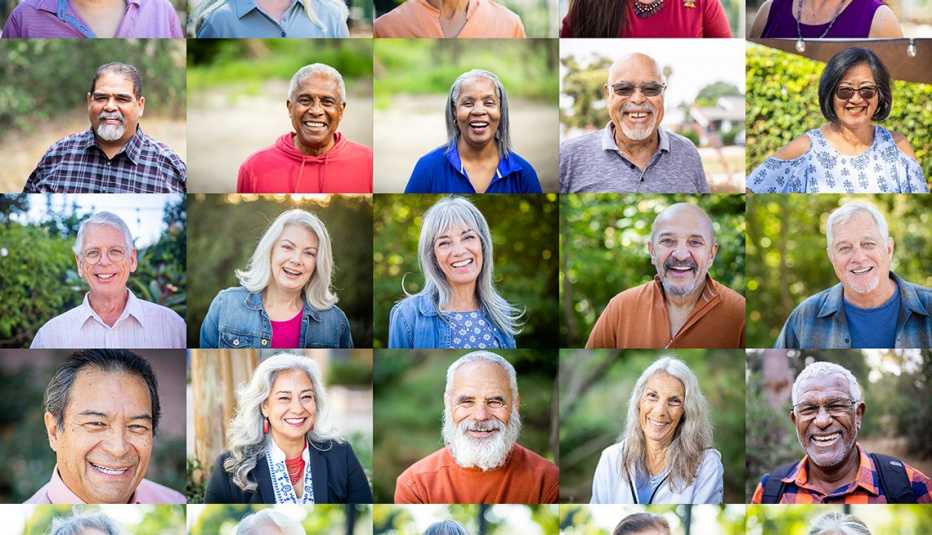






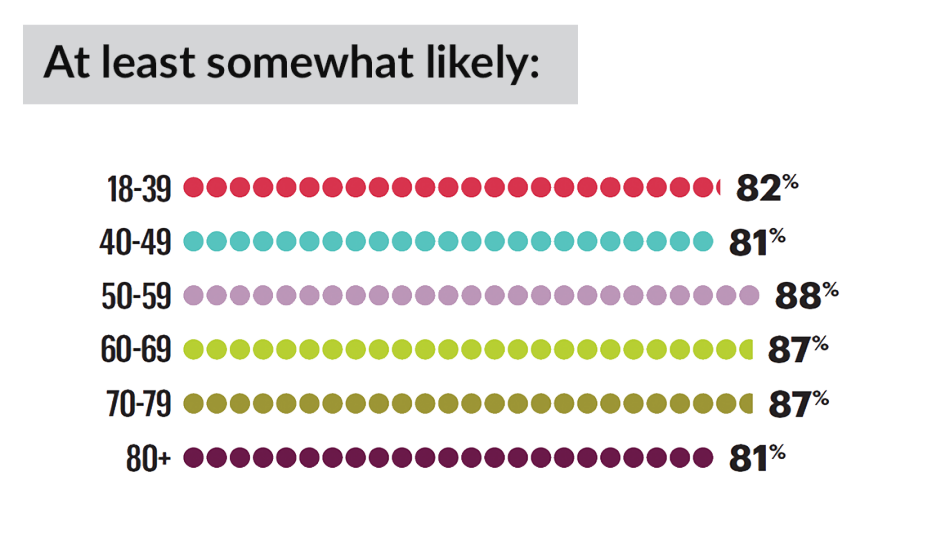






























































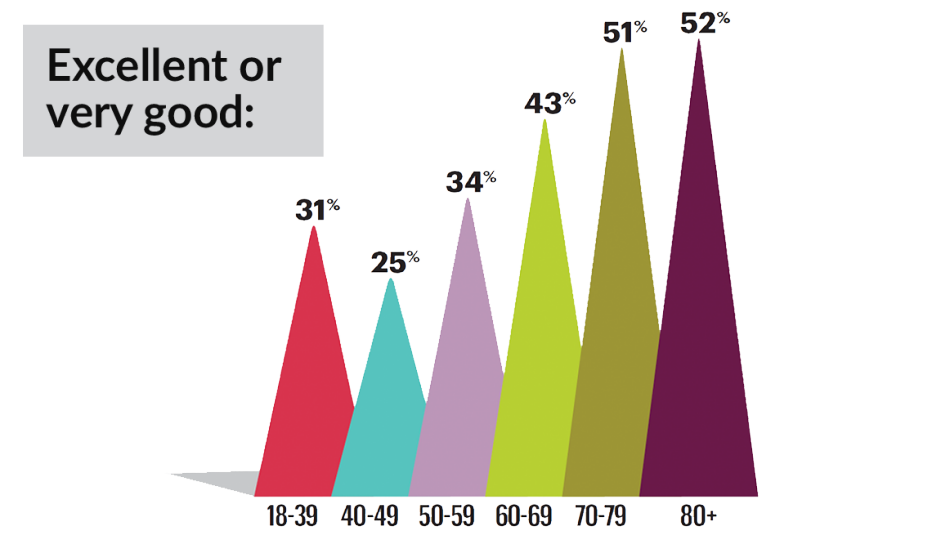
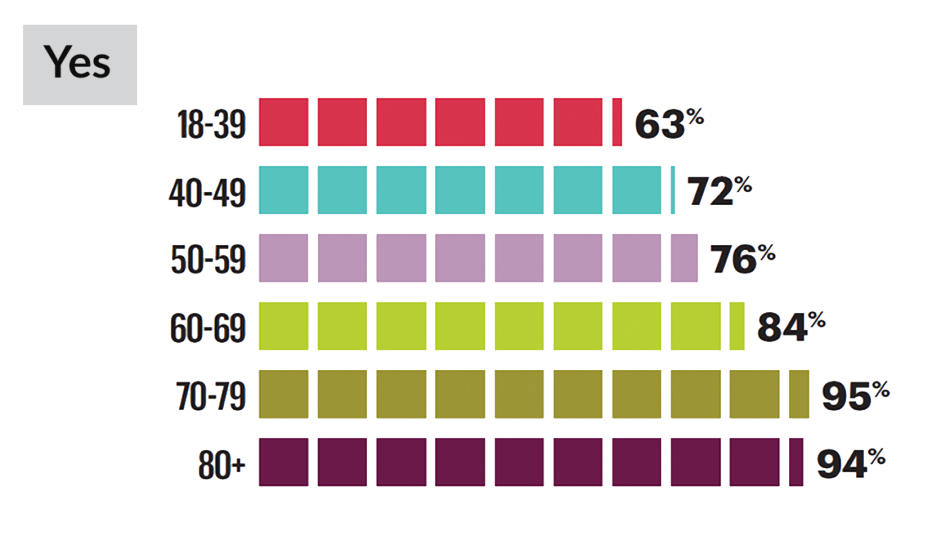
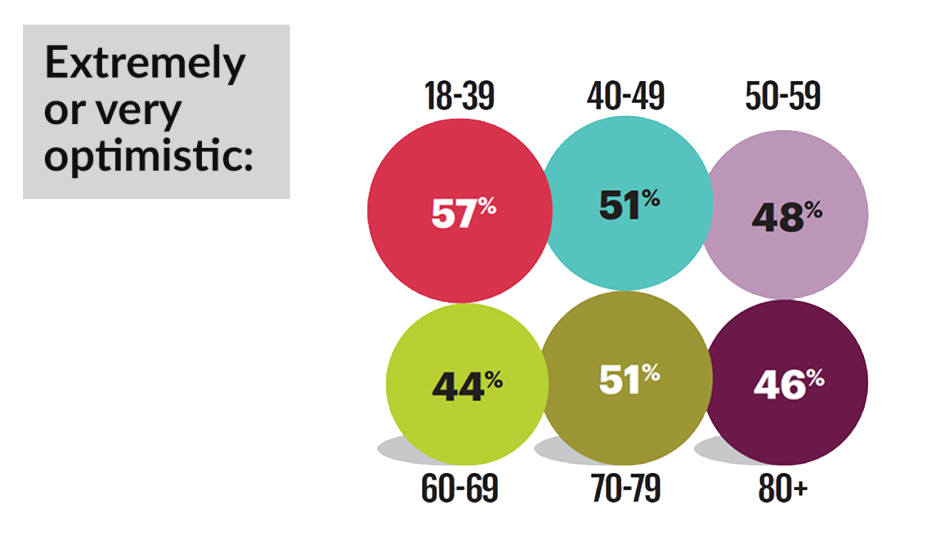
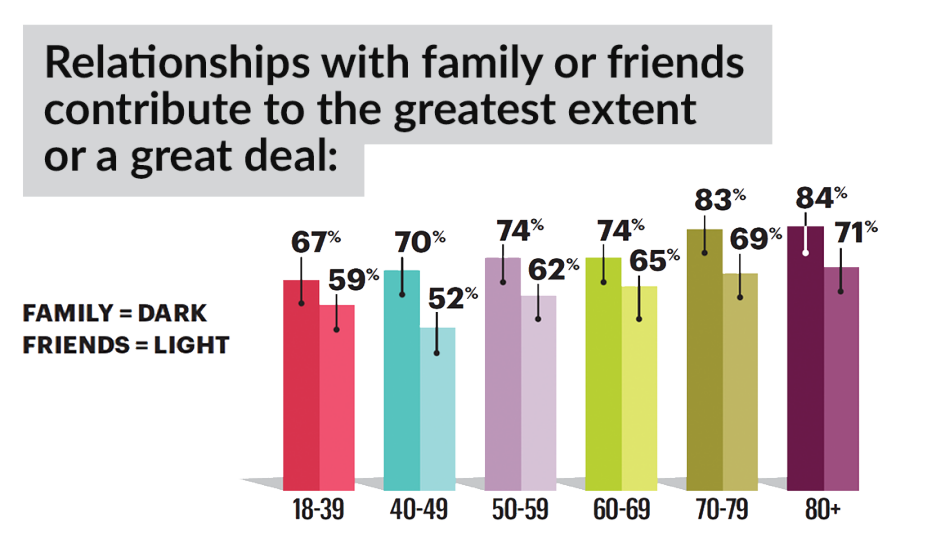





More on health
AARP-National Geographic Aging Study Shows Us Where Action Is Needed
Results provide insights that could bring positive changes to our institutions and people’s lives
Where You Live at 50 Could Determine How Long You Live
AARP report finds access to health care, housing, jobs matters most at midlife10 States With Lowest Life Expectancies
How long you live, based on where you live